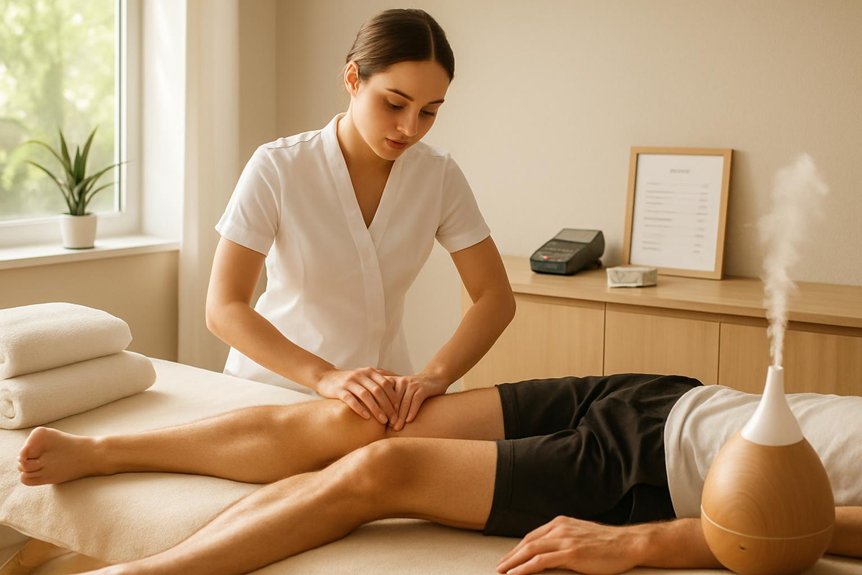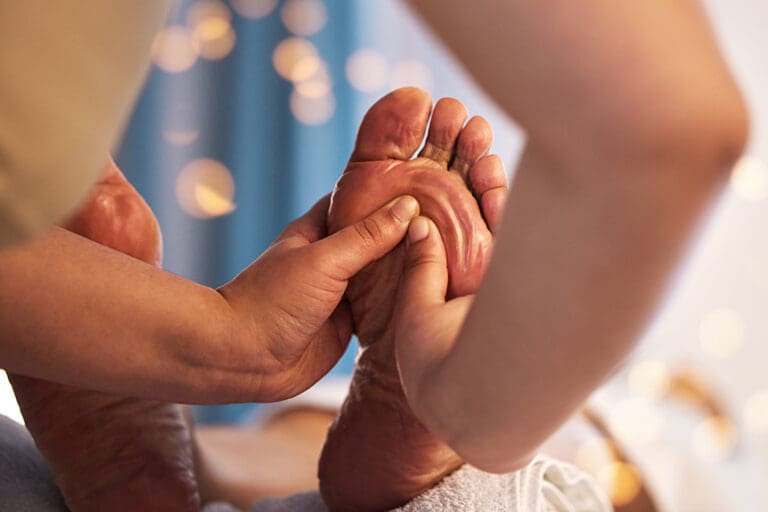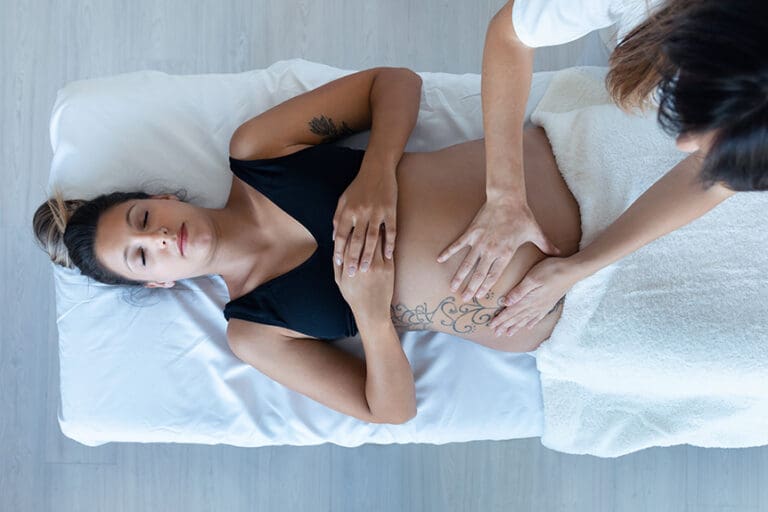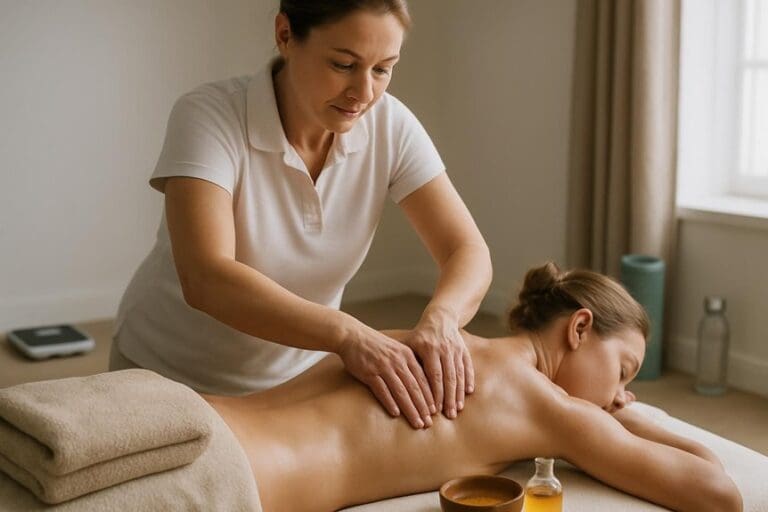In London, this massage typically costs £45–£60 for 30 minutes, £65–£90 for 45 minutes, £80–£120 for 60 minutes, and £110–£160 for 75–90 minutes. Prices vary by session length, therapist expertise, clinic location, and treatment complexity. Longer sessions cover assessment, targeted techniques, and integration, raising fees. Advanced credentials and methods like myofascial or neuromuscular therapy cost more. Packages or memberships can reduce per-session rates. Factors such as facilities and goals also affect value. Further details clarify how to choose and save.
What Influences the Price of a Athletic Massage
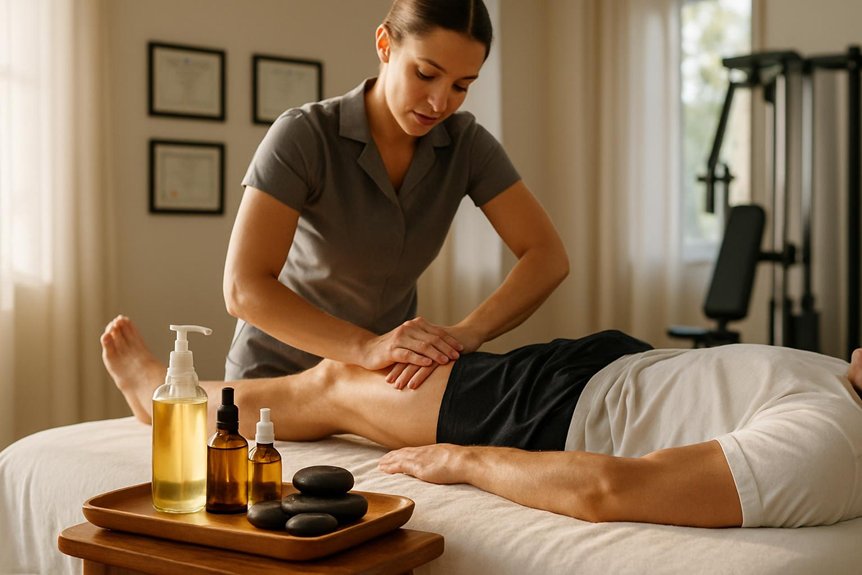
The price of a sports massage is primarily influenced by session length, therapist expertise, clinic location, and treatment complexity. Longer sessions allow thorough assessment, warm-up, targeted work, and integration, which increases cost.
Advanced credentials and experience command higher fees, particularly for complex presentations such as recurrent strain, post‑event care, or multi‑region dysfunction. Location shapes overheads; central and high-demand areas reflect higher operating costs.
Complexity also raises price when assessment, movement screening, or specialised techniques are required.
At Spa & Massage clinics in Crouch End, Bayswater, Chiswick, Earl’s Court, Belsize Park, and Richmond, pricing reflects evidence-based practice and time for individual goals. Charges may vary with bundled assessments, rehabilitative taping, or tailored aftercare.
Package bookings and consistent plans often optimise value while supporting steady progress. Athletic massage also delivers key benefits for athletes such as improved recovery, reduced injury risk, and enhanced performance.
Typical Price Ranges in London
Building on those factors, typical athletic massage prices in London range roughly from £45–£60 for 30 minutes, £65–£90 for 45 minutes, and £80–£120 for 60 minutes. 75–90 minute sessions are commonly £110–£160.
Central zones tend to have higher prices; outer boroughs are often mid-range. Prices also reflect therapist experience, clinic facilities, and demand at peak times. Package bundles can lower the effective rate per session.
From Spa & Massage’s perspective, transparent pricing supports informed choices. Their London clinics maintain competitive, clearly posted rates across Crouch End, Bayswater, Chiswick, Earl’s Court, Belsize Park, and Richmond, with options to match different goals—from targeted recovery to full-body work.
Clients typically select durations that fit their needs and schedules, then refine frequency with therapist guidance. This approach aligns cost with measurable outcomes and comfort.
Session Length Vs Cost: 30, 45, 60, and 90 Minutes
Session length directly influences price, with costs typically increasing in clear tiers for 30, 45, 60, and 90 minutes.
At Spa & Massage, shorter sessions suit targeted areas or quick recovery work, while longer appointments allow full-body assessment and extensive treatment.
Clients are advised to choose the shortest duration that effectively addresses their goals and current training load, then adjust frequency or length based on results.
Price by Duration
Across Spa & Massage clinics in London, athletic massage pricing scales with session length to match treatment goals and budget. Shorter appointments cost less and target a specific area; longer sessions allow exhaustive work and recovery planning.
Typical structures are as follows:
- 30 minutes: focused assessment and rapid relief for one region; efficient before or after training.
- 45 minutes: extended single-area care or two small regions; space for deeper techniques.
- 60 minutes: full-body screening with priority zones; ample time for trigger-point and myofascial work.
- 90 minutes: thorough, unhurried treatment; layered techniques, assisted stretching, and measured pacing.
Pricing reflects therapist time, clinical expertise, and intensity of techniques.
In Spa & Massage clinics, rates are transparent, with package options that reduce per-session cost while preserving quality and continuity.
Choosing Optimal Length
With clear pricing by duration established, the next step is selecting the appointment length that fits goals, tolerance, and budget. At Spa & Massage, therapists match time to need: 30 minutes targets one area—ideal for a focused calf, shoulder, or neck release, or a pre/post-event tune-up.
Forty-five minutes allows assessment plus one to two regions. Sixty minutes balances value and scope, supporting a fuller chain—hips to hamstrings, or shoulders to forearms—with measured depth and breath work.
Ninety minutes suits complex patterns or athletes combining assessment, remedial work, and recovery planning.
Heavier pressure and trigger-point work benefit from longer sessions for warm-up, integration, and gentler finishes.
For new clients, therapists recommend starting at 45–60 minutes, then adjusting frequency or duration to optimise progress and cost.
Single Sessions Vs Packages and Membership Savings
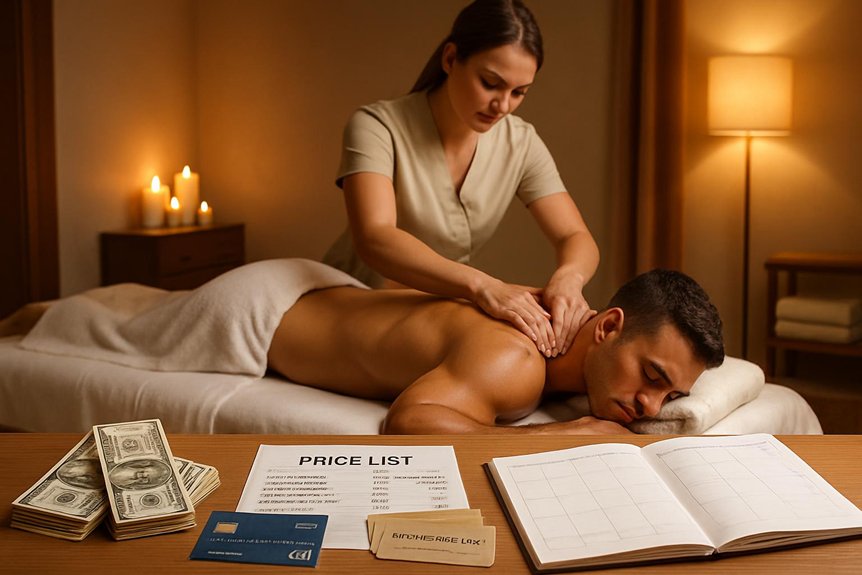
Although a one-off athletic massage can address an acute issue or act as a timely tune-up, the cost-to-benefit ratio often improves with packages and memberships. For clients training regularly or managing recurrent tightness, bundled bookings typically lower the per-session price and encourage consistent care—key for meaningful gains in mobility, recovery, and injury prevention.
At Spa & Massage, packages suit those wanting a defined block of treatments around races or intensive training cycles. While memberships support year-round maintenance with predictable monthly costs and priority booking across our London clinics.
Savings commonly range from modest discounts to meaningful reductions when sessions are used consistently. Clients also value flexible durations and the freedom to target problem areas as they evolve.
In practice, regularity enhances outcomes and protects budgets.
Therapist Expertise and Specialisation Impact on Price
Therapist fees often reflect formal qualifications, advanced certifications, and years of clinical experience.
Practitioners trained in specialist sports techniques—such as myofascial release, trigger-point therapy, and event-focused pre/post-event protocols—command higher rates due to targeted skill and outcomes.
At Spa & Massage, clients are matched with appropriately qualified therapists across our London clinics, ensuring pricing aligns with the level of expertise required for their goals.
Qualifications and Certifications
A athletic massage price often reflects the therapist’s formal qualifications, accredited certifications, and depth of specialisation. In London, advanced diplomas (e.g., Level 5 in soft tissue therapy) and recognised athletic massage certifications signal rigorous training in assessment, injury risk screening, and clinical reasoning.
Higher credentialing typically correlates with better outcomes and, accordingly, higher fees.
From Spa & Massage’s perspective, clients value transparent expertise. Therapists holding advanced qualifications maintain up-to-date CPD in anatomy, pathology red flags, and safe load progression, which supports precise pressure, appropriate pacing, and tailored recovery advice.
Certification in first aid and professional registration further assures safety and accountability. For budget planning, clients may expect qualified, insured therapists to command a premium, while still receiving clear goal-setting, measured progress checks, and responsible aftercare guidance.
Specialist Sports Techniques
Beyond formal credentials, price is also influenced by the specific sports techniques a practitioner can deliver. Advanced modalities—such as myofascial release, active release, neuromuscular techniques, lymphatic drainage for recovery, and instrument-assisted soft tissue mobilisation—require additional training, time, and clinical judgment.
Sessions integrating pre-event stimulation, post-event recovery protocols, or sport-specific joint mobilisations typically command higher fees due to their precision and outcome focus.
At Spa & Massage, therapists tailor techniques to the client’s sport, injury history, and training phase. They may combine deep tissue with trigger point mapping, assisted stretching, and graded pressure to target fascia, tendon insertions, and overused muscle groups.
Pricing reflects the therapist’s specialisation and session complexity. Clients are advised to request a clear treatment plan and goals up front; transparency guarantees value and measurable progress.
Location and Clinic Facilities as Cost Factors
Why does location matter when budgeting for a athletic massage? In London, postcode economics influence pricing: higher rents and operating costs in areas like Bayswater, Earl’s Court, or Richmond typically translate to slightly higher session fees than quieter neighbourhoods.
Travel time and convenience also carry value—proximity to work or home reduces indirect costs for the client.
Clinic facilities further shape price. Purpose-built treatment rooms, regulated hygiene protocols, and high-spec equipment (adjustable couches, fresh linens, proper ventilation) add overhead but enhance clinical outcomes and comfort.
At Spa & Massage’s London clinics—Crouch End, Bayswater, Chiswick, Earl’s Court, Belsize Park, and Richmond—consistent standards are maintained, yet local costs vary.
Clients seeking discreet, well-maintained spaces, reliable appointment availability, and professionally supervised environments can expect fees to reflect these tangible quality safeguards and the assurance they provide.
What’s Included in the Fee at Spa & Massage
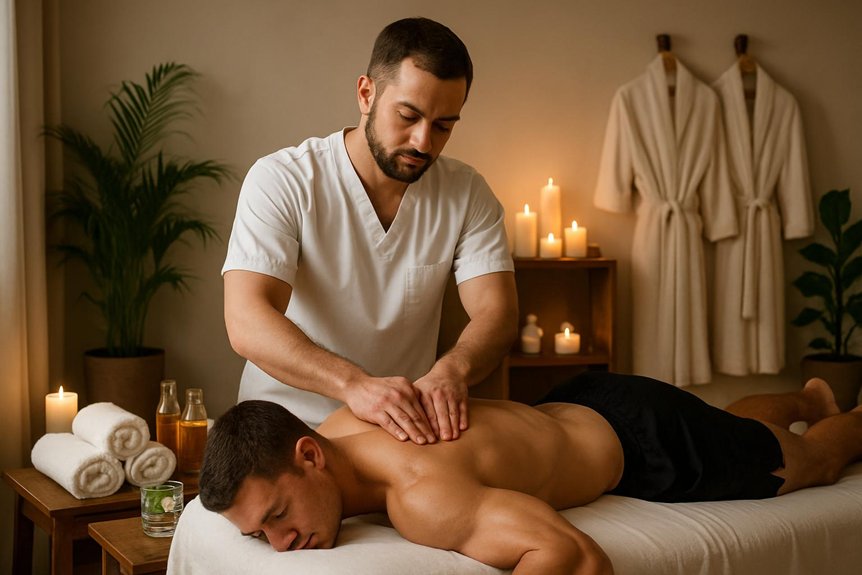
Included in the athletic massage fee at Spa & Massage is a clinically structured experience: a brief pre-session consultation to establish goals and contraindications; time-efficient appointment management that preserves the full hands-on duration booked; tailored treatment delivered by trained therapists using appropriate techniques (e.g., deep tissue and myofascial work) and clinic-standard oils or balms; clean, private treatment rooms with fresh linens; and post-session guidance on aftercare, stretches, and self-management.
The fee also covers professional hygiene standards, respectful draping, and pressure calibrated to client preference.
In our clinics, therapists integrate trigger point release and assisted range-of-motion work when indicated, and offer concise advice on hydration, heat or cold use, and pacing of activity.
Notes are recorded to inform future sessions, supporting consistent, measurable progress across our London locations.
Ways to Get the Best Value From Your Athletic Massage
How can clients maximise outcomes and spend? By arriving with clear goals and sharing injury history, training load, and pain patterns.
At Spa & Massage, therapists then tailor pressure, pacing, and techniques—trigger point work, myofascial release, or assisted stretching—to prioritise what measurably helps. Clients gain value by booking the right length: complex issues often need 60–90 minutes; maintenance may fit 45–60.
Pre-session hydration and light movement improve tissue responsiveness; post-session, our therapists recommend 24–48 hours of recovery, adequate protein, and simple mobility to consolidate gains.
Scheduling sessions around key training cycles reduces redundant visits. Combining focal work with a short full-body scan catches compensations early.
Finally, clients who follow our brief home plan—two or three targeted exercises—maintain results between appointments, protecting both progress and spend.
How to Budget for Regular Recovery and Performance Care
Although recovery often gets deprioritised until pain appears, a clear budget plan helps maintain consistency and prevent costlier setbacks. A practical approach starts by mapping training load, injury history, and work stress, then setting a monthly allowance for bodywork, mobility tools, and sleep support.
Many clients allocate 2–4% of income or the cost of one race entry per month. From Spa & Massage’s perspective, a cadence of athletic massage every 2–4 weeks suits most active people; during peak training, weekly sessions may be justified.
Bundles and off-peak bookings can lower cost without sacrificing quality. They advise pairing massage with self-care: daily mobility, hydration, protein intake, and deload weeks—reducing the frequency needed. Track outcomes—pain, range of motion, performance—to adjust spend with intention.
Conclusion
In the end, clients weighing a athletic massage often discover the numbers align by coincidence with their goals: longer sessions when training peaks, shorter tune-ups between events, packages when recovery is a habit. Evidence shows cost shifts with expertise, time, location, and add-ons—yet value increases when booking off-peak, using memberships, and targeting specific outcomes. At Spa & Massage, clear pricing and tailored plans help budgets match performance needs, ensuring smart spend becomes part of consistent, measurable progress.
